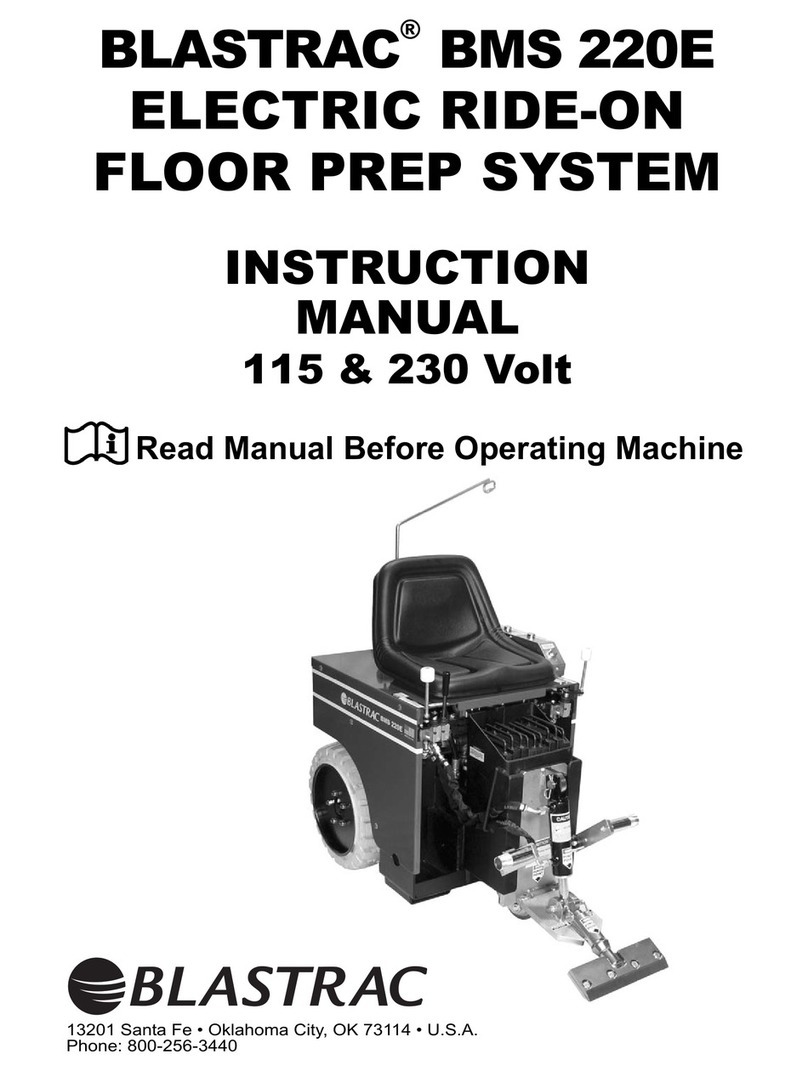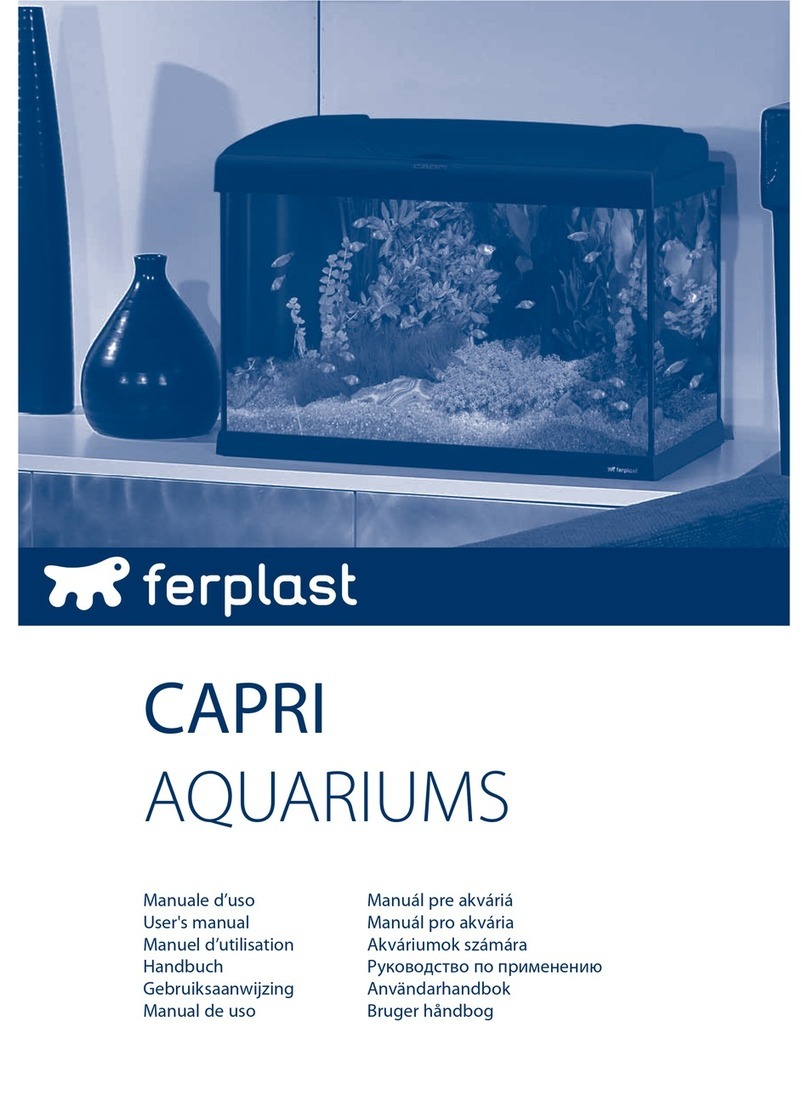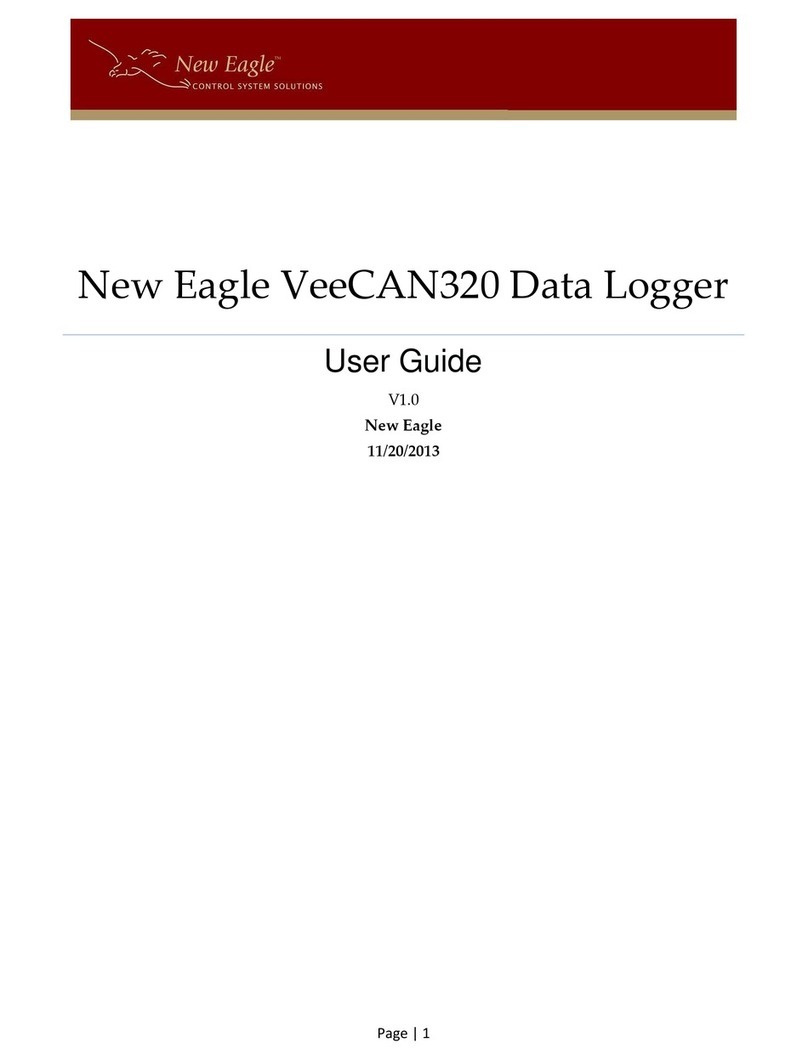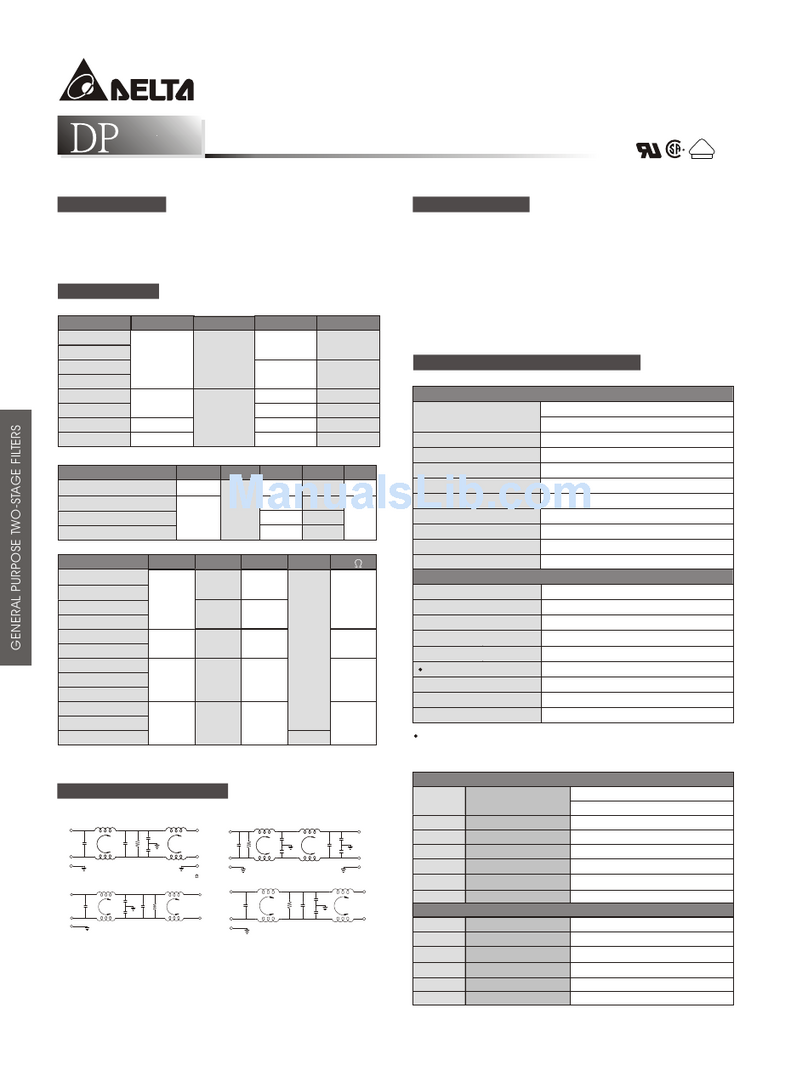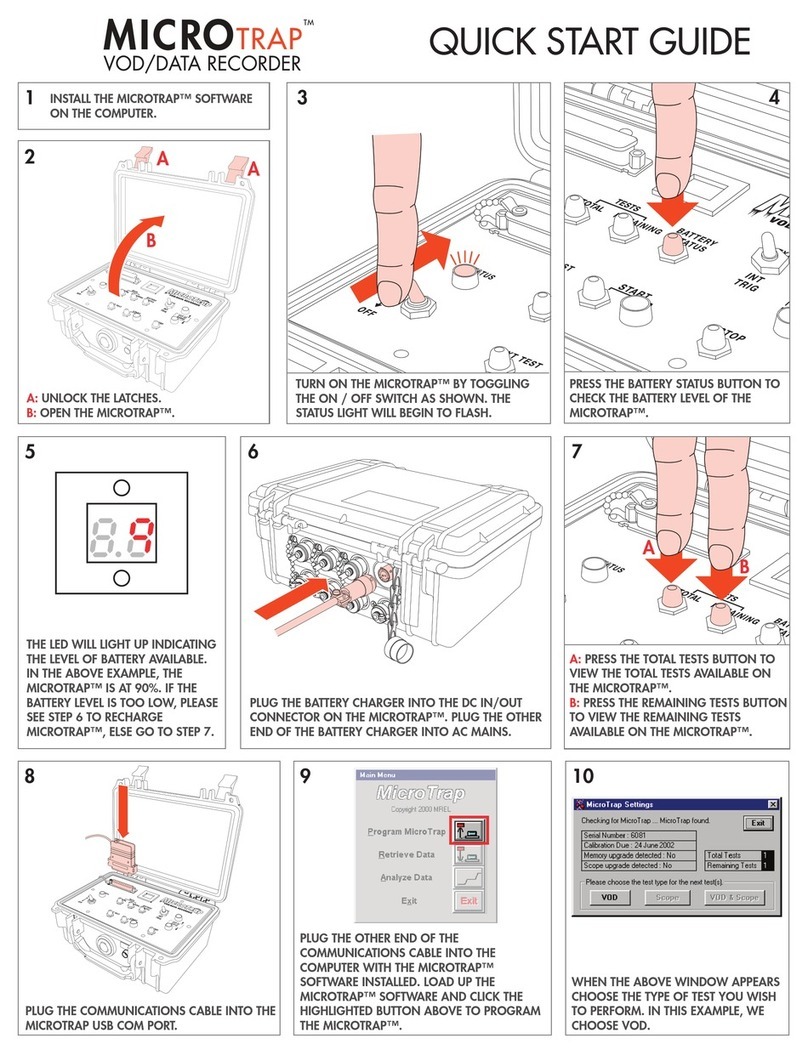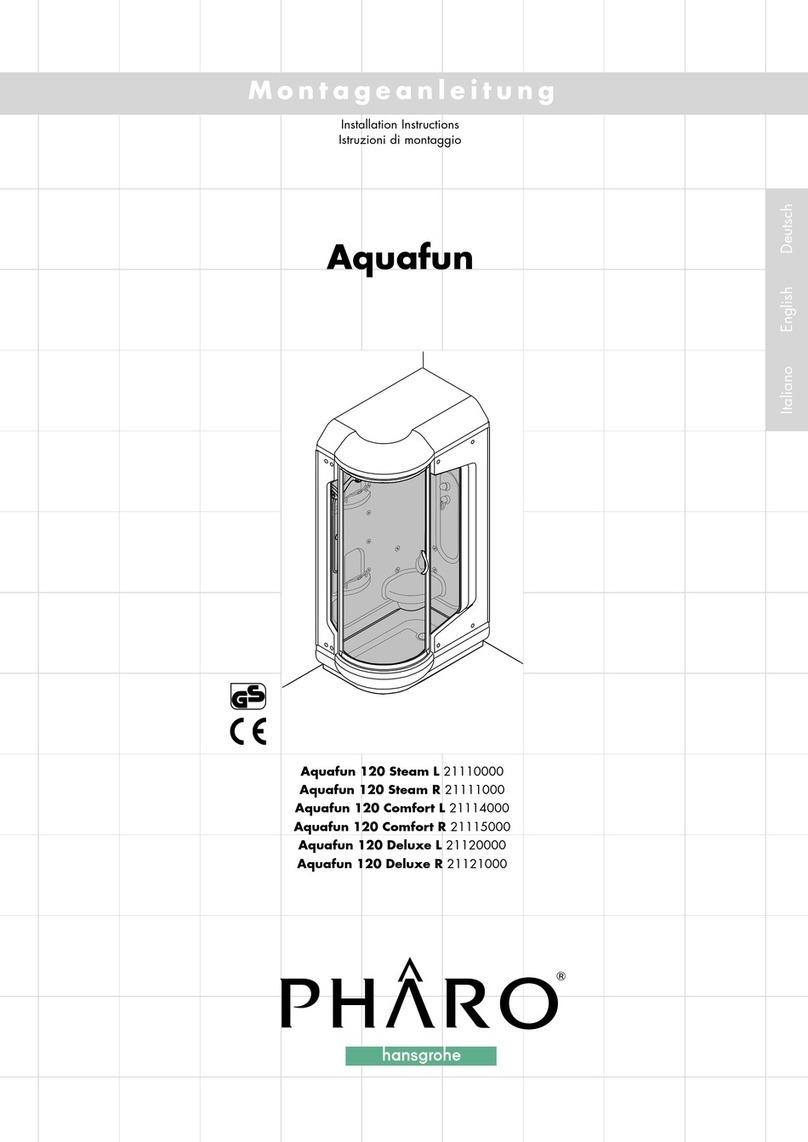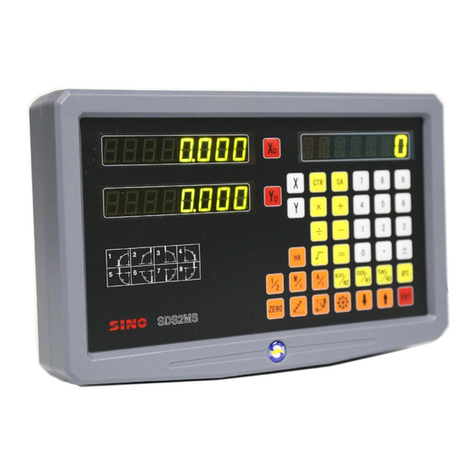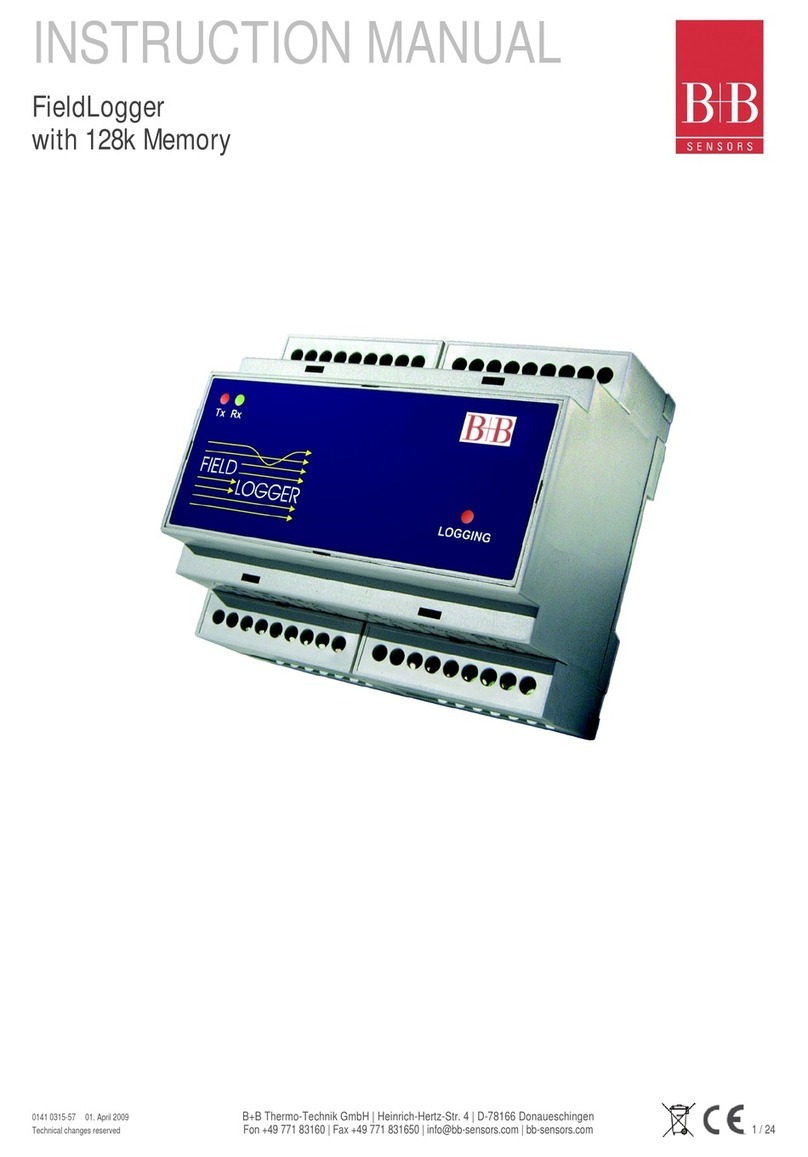Flowplant 115 Series User manual

115 Series 200 / 300 Series 315 Series 400 Series Mk4 Lightpack
EQUIPMENT • PARTS & ACCESSORIES • SERVICING • TRAINING
Operator’s Quick Reference
Safety Guide
Vanpacks
Part No 061874

Focussed on Your Jetting Needs
Flowplant has been creating innovative, high pressure drain and sewer
cleaning equipment for over 40 years, selling thousands of high quality and
reliable machines throughout the UK and exporting to over 50 countries
around the world.
Through our nationwide network of service and distribution centres, we offer
a complete range of keenly priced drain jetters and accessories that get the
job done, are affordable within your budget and will continue to operate
efficiently and cost effectively for many years.
2.0 Scope of Supply
3.0 Health & Safety
4.0 Technical Specification
5.0 Controls
6.0 Operation Maintenance
03
04 - 07
08 - 09
10 - 14
15 - 18
7.0 Fault Finding
8.0 Appendix
Declaration of Conformity
Service History
19 - 20
21
22 - 23
This Operator’s Quick Reference Safety Guide is intended to allow operators to quickly become familiar with the
essential controls and safety requirements of Flowplant jetters. It does not replace the full operation and maintenance
manual which should be read and which contains additional operation and safety information.
Contents
Throughout this manual various warnings are given with this icon.
Where shown, failure to follow the instruction can result in serious injury or even death.
!Please pay particular attention to these recommendations
1.0 Introduction

Flowplant drain jetters have been designed to the highest standards so that they will work safely and reliably for many
years. It is important that you take time to read the information provided in this guide so that you understand how to
make the most of the jetter and how to use it safely. Flowplant jetters are powerful pieces of industrial equipment and
should only be operated by competent users who understand that serious injury or death can occur through misuse.
The jetters described in this Operator’s Quick Reference Safety Guide are intended to be used for high pressure
water jetting in drain and sewer systems from 50mm up to 450mm diameter.
They will remove soft blockages, tree roots and hard scale, liquefying fats and restoring drain flow by blasting high
pressure water through a drain nozzle connected to the end of a high pressure hose. Some models can be fitted with
jump jets kits to increase the effective cleaning distance.
Flowplant jetters use diesel or petrol engines to power a high pressure water pump up to 350 bar (5,000 psi) / 60 l/min
(13 gpm). Van pack jetters are installed semi permanently into the back of a suitable panel van and they are fitted with a
water tank up to 780 litre (180 gallons) capacity.
Additional accessories can be purchased from Flowplant, such as: floor cleaners, jetting guns and jet pumps which
extend the range of work that can be carried out with the jetter. Separate details are available on request.
03
2.0 Scope of Supply

3.1 Safety Notes
●Operating procedures throughout this manual must
be adhered to. In the case of conflicting or
ambiguous instructions, reference must be made
to a Site Manager or Safety Officer before
commencing work.
●Any person operating, working with, or passing
near the jetter must wear the necessary Personal
Protective Equipment (PPE).
●The Site Management should make available to
operators or persons working with the jetter the
appropriate technical documentation and should
ensure such persons read and understand the
documentation prior to commencing their duties.
●Special tools should be used where
recommended.
●Prior to any maintenance or repair work being
carried out the jetter must be shut down,
de-pressurised and equipment isolated.
●Any maintenance requirements in this manual
should be adhered to as minimum maintenance
requirements. Maintenance records should be up
to date at all times.
●Guards which are located within the jetter must be
fitted and must not be loosened or removed whilst
the jetter is operational. Should it be necessary to
remove any guard for access, it must be re-fitted
and secured before start up.
3.2 Use of High Pressure Equipment
●All persons using high pressure jetting equipment
should be fully conversant with relevant operating
instructions, safety notes and Codes of Practice.
●Operators must be competent in all aspects of jetter
use.
●All high pressure water jetting operations should be
under the control of a fully trained supervisor, who will
be aware of the potential hazards to operators and
passers-by
●Warning notices, ‘DANGER - HIGH PRESSURE
JETTING’ should be displayed at all possible access
points to the jetting area. Notices are available from
Flowplant Group Ltd.
●Before starting the jetter, ensure that you, and
anyone else who may be in control at any time, are
fully aware of its controls and their function.
●It is especially important that everyone knows how to
stop the jetter in case of an emergency.
●Ensure that all the pre-operational checks have been
completed, and that any necessary actions have been
taken.
●Do not operate the jetter near any persons or
animals.
Throughout this manual various warnings are given with this icon.
Where shown, failure to follow the instruction can result in serious injury or
even death.
High pressure jetting can be extremely dangerous if it is not properly controlled by
fully trained personnel
3.0 Health & Safety

3.0 Health & Safety
3.3 Potential Hazards and Misuse of High Pressure Equipment
05
●Never use a jetter that isn’t regularly serviced
according to the manufacturer’s recommendations.
●When a jetter is used to clean drains & sewers that
are contaminated with a hazardous substance it is
possible these may be entrained in the resulting
aerosol and inhaled by operators. Consider using
respiratory protection.
●Do not spray flammable liquids - there is
a risk of explosion.
●Ensure the correct fuel is used on all
occasions or there is a risk of explosion.
●Never start the jetter when frozen. Operating a
jetter whilst frozen could cause high speed ice
bullets to be ejected from the jetter hose on
machine start up.
●Never start jetting a drain, sewer or pipe unless the
jet nozzle is safely inside the drain and pointing in
the direction that you intend it to travel.
●When drain jetting a drain, sewer or pipe with an
inside diameter that is not small enough to prevent
the hose from turning back on itself, a drain jet
extension (a piece of straight rigid tube equivalent
to the pipe diameter) should be fitted between the
end of the hose and the nozzle.
●Always use a safety leader hose at the beginning
of the main jetting hose to alert operators when the
jet nozzle is nearing the manhole entrance.
●Always consider the use of a tiger tail hose feed
guide to protect the jetting hose from abrasion and
prevent premature failure.
●Be aware that high pressure hoses can generate
static electricity which may need to be controlled
when working in hazardous areas.
●Never direct a high pressure water
jet at electric power lines or electrical
equipment as serious injury or death
from electrocution could occur.
●When jetting drains or sewers if there is a danger
to the general public from hoses laying across
public walkways they must be covered in such a way
as to protect against injury from hose failure and
tripping hazards.
●Before starting work check and ensure the drain jets
have no blocked holes or nozzles as this may cause
the pumping system to over pressurise which could
result in burst disc failure or bursting the jetting hose.
●Never attempt to unblock a fully choked drain or pipe
before considering the consequence of releasing the
blockage and having a plan to deal with it. E.g.
flooding, material ejection, drain nozzle ejection.
●Never attempt to clean drains or pipes in one pass
because this could lead to debris build up behind
the jet nozzle causing a pressure build up in the
drainage system. Be aware that a pressure build up
in the drain or pipe could cause the jet nozzle to be
ejected at speed back towards the operator.
●Never enter the manhole to either place the jet
nozzle into or extract it from the drain entrance
unless the required confined space regulations have
been met.
●Never work in a manhole with a radio remote control
transmitter that is not classified for use in such
areas.
●Never use the hydraulic hose reel facility as a winch
to retract a jetting hose that has become stuck in the
drain or pipe. Damage to the hose could be caused
that will make subsequent hose failure more likely.
●Never allow jetting hoses to become kinked and
always remove from service any jetting hose with an
outer cover that has worn through to the reinforcing
braid.
●Never use the high pressure jetting hose for any
purpose other than sewer, drain or pipe cleaning,
e.g. winching vehicles or other plant.
●Never use jetting nozzles and/or accessories that
have not been calibrated for the jetting machine
pump performance as this could cause rapid over
pressurisation catching operators unaware.

3.0 Health & Safety
●Never attempt to clean a drain or pipe with a
nozzle that has more forward force than rear force.
It could be ejected back toward the operator
causing injury.
●Never attempt to clean a drain or pipe with a chain
flail type jet that has unequal chain lengths as this
could lead to severe vibration and high pressure
hose failure.
●When using a venturi jet pump to remove fluid from
a flooded manhole never place your fingers into
the pump inlet as they could be trapped by the
vacuum and cause injury.
●When using a venturi jet pump to remove fluid from
a flooded manhole always secure the free end of
the pump hose securely and ensure adequate
drainage is in place to deal with high volumes of
pumped water.
●Never use a dry shut type foot control valve on a
jetter that does not have a pressure unloader valve
as this could result in burst disc failure or bursting
the jetting hose.
●Never use a dry shut type jetting gun valve on a
jetter that does not have a pressure unloader valve
as this could result in burst disc failure or bursting
the jetting hose.
●When using a dry shut type system be aware that
high pressure can be retained in the jetting hose
even after the machine has been shut down.
Always discharge pressure in a safe manner after
machine shut down.
●Never point the gun at anyone as injury from high
pressure water will occur if the jet stream comes
into contact with body parts.
●Never work on a slippery surface because the
reaction force of the jetting gun could cause you to
become unstable and lose your footing.
●Never work from a ladder as the reaction force of
the jetting gun could cause the ladder to fall
backwards from the working area causing possible
injury.
●Never work from scaffolding unless it is designed,
erected and managed by competent persons and it
is adequately secured to prevent it being pushed
over by jetting gun reaction forces.
●When using the jetting gun to clean hard surfaces
be aware that splash back could contain hard debris
travelling at speed.
●When using the jetting gun to clean contaminated
surfaces be aware that splash back could contain
dangerous contaminants.
●Never use the jetting gun to clean a surface that
could be damage or penetrated by the water
pressure unless that is the desired effect.
●Always ensure that an adequate area is cordoned
off around the working zone so that flying debris
and contamination cannot injure passers by.
●Be aware that the use of water jetting guns fitted with
oscillating or rotating heads tend to produce higher
hand arm vibration levels than simple fixed head jets.
●When using a jetting gun or nozzle to clean at floor
level wear suitable protective foot wear.
●Never use a high pressure jetting gun to
clean down PPE whilst you or others are
still wearing it as serious injury and death
could result.
●Never use a high pressure jetting gun to
wash or cool down livestock as serious
injury and death could result.
●Drainage systems may carry bacteria and
micro-organisms which can cause severe illness or
death. Avoid exposing eyes, nose, mouth, ears,
hands, cuts or abrasions to waste water or faecal
matter during drain cleaning operations. After
working around drainage systems help protect
yourself by always washing hands, arms and other
areas of the body with hot, soapy water and, if
necessary, flush mucous membranes with clean
water. Disinfect soiled equipment by washing
surfaces with a hot soapy wash using a strong
detergent.
3.3 Potential Hazards and Misuse of High Pressure Equipment

3.0 Health & Safety
All persons using high pressure water jetting equipment
should use all necessary PPE suitable for the task being
carried out. This includes, but is not limited to:
●Ear protection
●Eye protection: a helmet with chin guard and visor
is recommended
●Hand protection
●Waterproof clothing
●Safety boots with toe protection
Please note: A site specific risk assessment must
be completed to analyse which PPE must be worn.
3.5 Hoses
The following checks must be made before use:
●High pressure jetting hoses must be checked
along their entire length at the start of each shift to
ensure that they are free from external damage.
Hoses with exposed or broken reinforcing braid or
damaged couplings and fittings may fail without
warning and must be replaced immediately.
●Before use check end fittings and couplings for
damage to threads, sealing faces and rounding of
connection nuts. Only use the correct size spanner
to tighten the hose fitting. Stilsons or adjustable
spanner type tools with serrated teeth must not be
used.
●Hoses that have been used MUST NOT be
re-ended under any circumstances - see ISO
4413:2010 section 5.4.6.5.1
●If water appears from the hose, coupling
or connector, often first sighted as a fine
mist, then the hose is damaged and could
burst or a joint is loose or defective.
STOP THE JETTER IMMEDIATELY!
No attempt should be made to adjust any
hose, coupling or connector whilst that part
of the system is under pressure.
●Pressure relief valves should be checked for
functionality and certified by the manufacturer or
their authorised representative at least every 6
months.
●Pressure discs (burst discs) should be replaced at
least every 6 months to ensure continued safe
operation and only manufacturer’s original
replacements should be used.
●Under no circumstance should a foreign object be
used in place of a manufacturer’s pressure disc
(burst disc).
3.7 Carbon Monoxide Poisoning
●Ensure the van cab is fully vented after using the
jetter.
●The operator should have rear and side doors open
when operating the machine.
●It is advisable to carry a carbon monoxide monitor in
the rear or the vehicle and the cab of the vehicle as
an early warning of any gas build up.
●Ensure that any exhaust emissions are not in the
vicinity of any air intakes as suffocation could occur.
!
3.4 Personal Protective Equipment (PPE) 3.6 Pressure Safety Devices
The vehicle & jetter use an engine that
could cause build-up of carbon
monoxide gases in the vehicle storage
area or cab.
07

115 Series 200 Series 300 Series
Pressure 200 bar / 3000 psi 200 bar / 3000 psi 200 bar / 3000 psi
Flow 36 l/min / 8 gpm 41 l/min / 9 gpm 50 l/min / 11 gpm
Pump Hawk XLTI Interpump HP22 Speck NP25
Engine Honda GX690 Lombardini LDW1003 Lombardini LDW1404
Engine Power 16 kW / 22hp 18 kW / 24 hp 26 kW / 35hp
Engine Cooling Air Cooled Water Cooled Water Cooled
Run Time Meter Engine Monitor Engine Monitor Engine Monitor
Fuel Type Petrol Diesel Diesel
Fuel Capacity 20 litres 20 litres 20 litres
Standard Tank Capacity 325 litres 270 litres (400 litre option) 270 litres (400 litre option)
Hose Type 3/8” 60m (200 ft) 1/2” 90m (300 ft) 1/2” 90m (300 ft)
Hose Reel Pivoting Fixed Fixed
Hose Reel Control Manual Hydraulic Hydraulic
Hose Feed N/A
Inlet Hose Reel 1/2” 50m (170 ft) 3/4” 25m (85 ft) 3/4” 25m (85 ft)
Standard Drain Jets
Drain Jet Extension
Safety Leader Hose
Radio Remote
Jump Jet Kit N/A
Anti Freeze Kit
Dry Weight (kg) * 270 465 495
Max Weight (kg) * 600 735 765
Dimensions (L x W x H) m 1.14 x 1.20 x 1.12 1.25 x 1.20 x 1.36 1.25 x 1.20 x 1.44
???
x3
x3
x3
Included
3 Included
Optional
x3
?
4.0 Technical Specifications
*All weights & dimensions are approximate

315 Series 400 Series Lightpack
Pressure 200 bar / 3000 psi 200 bar / 3000 psi 200 bar / 3000 psi
Flow 50 l/min / 11 gpm 60 l/min / 13 gpm 55 l/min / 12 gpm
Pump Speck NP25 Hawk HFR Harben ‘P’ Type
Engine Lombardini LDW1404 Lombardini LDW2204 Yanmar 4TNV-88
Engine Power 26 kW / 35 hp 36 kW / 48 hp 33 kW / 44 hp
Engine Cooling Water Cooled Water Cooled Water Cooled
Run Time Meter Engine Monitor Engine Monitor Engine Monitor
Fuel Type Diesel Diesel Diesel
Fuel Capacity 20 litres 30 litres 30 litres
Standard Tank Capacity 270 litres (400 litre option) 390 litres (780 litre option) 390 litres (780 litre option)
Hose Type 1/2” 90m (300 ft) 1/2” 90m (300 ft) 1/2” 90m (300 ft)
Hose Reel Fixed Fixed Fixed
Hose Reel Control Hydraulic Hydraulic Hydraulic
Hose Feed
Inlet Hose Reel 3/4” 25m (85 ft) 3/4” 25m (85 ft) 3/4” 25m (85 ft)
Standard Drain Jets
Drain Jet Extension
Safety Leader Hose
Radio Remote
Jump Jet Kit
Anti Freeze Kit
Dry Weight (kg) * 495 634 630
Max Weight (kg) * 765 1024 1020
Dimensions (L x W x H) 1.25 x 1.20 x 1.21 1.70 x 1.00 x 1.54 1.70 x 1.00 x 1.54
???
x3
x3
x3
Included
3 Included
Optional
x3
?
4.0 Technical Specifications
09
*All weights & dimensions are approximate

5.0 Controls
5.1 115 Series *
1 Petrol tank 9 Inlet water filter
2 Antifreeze tank 10 Antifreeze valve
3 Water tank 11 High pressure hose reel
4 Inlet hose reel 12 High pressure selector valve
5 Throttle & choke 13 Tank drain
6 Engine controller 14 Tank overflow
7 Emergency stop 15 Pressure control valve
8 Pressure gauge
*Manual controlled version shown here
11
12
3
4
5
6
7
8
9
10
12
13
14
15

5.0 Controls
5.2 200/300 Series *
1 Diesel tank 9 Inlet water filter
2 Antifreeze tank 10 Antifreeze valve
3 Water tank 11 High pressure hose reel
4 Inlet hose reel 12 High pressure diverter valve
5 Radio control unit 13 Tank drain
6 Engine controller 14 Tank overflow
7 Jump jet 15 Hydraulic tank
8 Pressure gauge 16 Hose reel control lever
*Radio controlled version shown here
16
5
4
3
6
7
1
2
8
9
10
13
11
14
15
12
11

5.0 Controls
5.3 315 Series *
1 Diesel tank 7 Jump jet
2 Antifreeze tank 8 Hose feed guide
3 Hose reel control lever 9 Antifreeze valve
4 Inlet hose reel 10 High pressure hose reel
5 Radio control unit 11 Tank overflow
6 Engine controller 12 Tank drain
*Radio controlled version shown here
1
2
3
4
5
6
7
8
9
11
12
10

5.0 Controls
5.4 400 Series *
*Radio controlled version shown here
13
1 Diesel tank 9 Inlet water filter
2 Antifreeze tank 10 High pressure hose reel
3 Water tank 11 High pressure diverter valve
4 Inlet hose reel 12 Tank drain
5 Radio control unit 13 Tank overflow
6 Engine controller 14 Pump
7 Hose reel control lever 15 Engine oil drain
8 Pressure gauge
10
1
3
2
4
5
6
7
8
9
11
12
13
14
15

5.0 Controls
5.5 Lightpack *
*Radio controlled version shown here
1 Diesel tank 9 Inlet water filter
2 Antifreeze tank 10 Pump
3 Water tank 11 High pressure hose reel
4 Inlet hose reel 12 High pressure diverter valve
5 Radio control unit 13 Tank drain
6 Engine controller 14 Tank overflow
7 Jump jet 15 Hose reel control lever
8 Pressure gauge 16 Engine oil drain
1
10
2
3
4
5
6
7
8
9
11
12
13
14
15
16

6.0 Operations
For a detailed operation guide specific to your jetter please refer to the digital manual included on the USB device
supplied with your jetter.
6.1 Daily Checks
Carry out all daily checks before you operate the jetter:
●Pump oil level
●Gearbox oil level
●Water filter cleanliness
●Engine oil level
●Fuel level
●All jets are clean and free from debris
●All jetting hoses are free from damage and
abrasion
If the jetter has been in operation for more than 100 hours,
other routine maintenance checks may need to be carried
out. For a more comprehensive guide to routine
maintenance, refer to Section 6.10.
6.2 Hydraulic Hose Reel (Optional)
The hydraulic control lever has three positions:
●In
●Out
●Freewheel (push lever fully back)
In ‘freewheel’ mode you can rotate the reel without
hydraulic power. The speed of the hydraulic motor can be
controlled with the black knob on the lever.
It is important to take note of the following points when
operating the reel:
●Never wind the hose onto the reel when it is not
pressurised. An unpressurised hose will wind
very tightly around the reel and cause the drum to
crush.
●If the hose becomes trapped in a drain you must
stop winding the reel immediately, stop jetting and
wind the hose manually. Failure to stop can result
in the hose crushing the drum, and/or the hose
being permanently damaged.
●If the hose has been wound on too tightly it must
be completely unwound and then rewound loosely
on the reel.
6.3 Pre-Start Procedure
●Park the vehicle safely on a level surface with the
engine switched off, the vehicle left in gear and with
the hand brake applied.
●Connect the inlet reel to a mains water supply and
fill the jetter tank. When full, the water will flow
through the tank overflow pipe.
●Push the hydraulic control lever (optional) to the
‘free wheel’ position and feed off enough high
pressure hose to reach the work area. Return
control lever to centre position.
●Check the emergency stop is in the out position
●Check the high pressure valve is in the OFF
position (manual machines only)
3
6.4 Starting the Engine (Manual Jetter)
If your machine is fitted with a radio remote control go to
section 6.5
●Turn the ignition key to the first position to energise.
●Once the glow plug light has switched off, or, after
approximately 5 seconds on a diesel engine, turn
the key to the second position to start the engine.
●If the jetter is fitted with a petrol engine, and you are
starting from cold, you will need to pull out the
choke while starting. Push it back in after the engine
has run for approximately 5 seconds.
●If there are any warning lights on
the engine controller switch off the
engine and consult the engine manual
supplied with your jetter. Only use a
machine with manual controls where
your risk assessment has shown that
it is safe to do so!
15

6.0 Operations
6.5 Starting the Engine (Radio Controlled
Jetter)
When operating the jetter using a radio handset it will be
necessary to “pair” the radio handset with the jetter before
the engine can be started.
●Check the E-Stop on the radio handset is released
and the handset is powered on.
●Select Remote on the jetter radio control panel.
●Turn the ignition key to the first position to
energise.
●To pair the radio handset to the jetter, hold down
buttons 7 & 8 for about 2 seconds. You should
hear a beep once the radio handset is paired and
the green handset light will flash.
Please Note: Pairing should take place within 15
seconds of switching the ignition on or else the
process will time out.
●Once the glow plug light has switched off, or, after
approximately 5 seconds on a diesel engine, turn
the key to the second position to start the engine.
●If the jetter is fitted with a petrol engine, and you
are starting from cold, you will need to pull out the
choke while starting. Push it back in after the
engine has run for approximately 5 seconds.
●You can now control the engine revs with buttons
1 & 2, and the high pressure water ON or OFF with
buttons 3 and 4.
●To stop the machine in an emergency whilst using
the radio handset, push the E-stop on the bottom
of the handset.
Please Note: The radio handset pairing procedure
will need to be repeated each time the handset or
engine ignition are switched off.
6.6 Operating the Jetter
.
An emergency shutdown can be initiated at any time by
switching off the engine with the key or pressing the
E-Stop button!
●With the engine running and high pressure water
OFF fit a nozzle to the end of the hose and tighten it
securely.
●Check the nozzle is inserted about 2m into the drain
before turning the high pressure water ON.
●Once inserted, switch the high pressure water ON
(on manual jetters) or press the water ON button on
the radio handset.
●To increase the engine speed, rotate the throttle
anticlockwise (on manual jetters) or press the
‘speed up’ button on the radio handset.
●To shut down the jetter decrease the engine speed
and switch the high pressure water OFF (on manual
jetters) or press the water OFF on the radio handset.
Please Note: It is possible to use radio control
machines in ‘local’ mode by selecting ‘local’ on the
machine radio control panel and using the local
control buttons appropriately.
6.7 Using a Pressure Control Valve
If the jetter has been fitted with a pressure control valve you
can adjust the jetting pressure independently of the engine
revs.
Please Note: To avoid stalling it is advisable to run
the engine at a minimum of 1/2 full speed.
●Before starting, check the pressure control valve is
wound out to avoid any sudden pressure increase.
●Start the jetter as described in Sections 6.4 /6.5.
●With high pressure water ON, wind in the pressure
control valve to increase the pressure.
●To shut down the jetter decrease the engine speed
and switch the high pressure water OFF (on manual
jetters) or press the water OFF on the radio handset.
Unwind the pressure control valve.
!
!
!
!

6.0 Operations
17
6.8 Using a Gun
6.8.1 Dump Style Gun
A dump style gun has two barrels. When the trigger is
pulled, water comes from the main barrel, through a jet, at
high pressure. When it is released the water is dumped
safely through a secondary barrel at low pressure.
6.8.2 Dry Shut Gun
A dry shut gun must only be used when an unloader valve
is fitted to the jetter. When the gun trigger is released the
water is diverted through the unloader valve and back to
the jetter tank.
If you do not have an unloader valve fitted when using a
dry shut gun you will cause serious damage to your jetter,
as well as possible serious or fatal injury to the operator.
When working with a gun always consider using a safety
shroud to provide the operator with greater protection in
the event of a burst hose.
Please Note: After turning off the jetter always
point the gun at the ground and pull the gun trigger
to safely release any trapped pressure.
6.9 Frost Precautions
Attempting to use a frozen jetting machine can
lead to ice pellets being ejected from the hose at
high speed with risk of serious injury or death!
It is recommended that during cold periods in the weather
you run antifreeze throughout your jetter including the main
jetting hose. If you suspect your jetter has frozen then you
should not attempt to start it. This can cause serious
damage to your equipment resulting in costly repairs.
Flowplant jetters can be fitted with an antifreeze kit as an
optional extra.
To antifreeze the machine:
●Drain the water tank
●Check your antifreeze tank is full with a 50/50
antifreeze mix
●Wind off a few meters of hose and remove any jet or
other accessory from the end
●Turn the antifreeze valve into the ‘Antifreeze’
position. This will close off the main tank and
instead feed the pump from the antifreeze tank
●Start the jetter and immediately switch to pressure
ON (on manual jetters) or press the ‘water on’ button
on the radio panel.
Please Note: If you allow the jetter to run on
dump all of the antifreeze will be diverted to the
main tank and will be wasted.
●Pointing the hose towards the ground and running
the engine at low speed, flush all the fresh water out
of the hose
●As soon as the antifreeze mix comes from the hose
switch off the jetter ignition.
To de-antifreeze the machine:
●Fill the water tank
●Move the antifreeze valve to the ‘run’ or ‘main tank’
(depending on jetter) position
●Put the end of the main jetting hose into the
antifreeze tank
●Start the jetter and fill the antifreeze tank
Please Note: Start the jetter and immediately switch
to pressure ON (on manual jetters) or press the
‘water on’ button on the radio panel.
●Switch to pressure OFF (on manual jetters) or press
the “water off” button on the radio panel when the
antifreeze tank is full.
●Switch off the jetter ignition.
Please Note: Regularly check the antifreeze
strength during cold weather periods.
Please Note: Flowplant suggests the use of
propylene glycol type antifreeze because it is less
damaging to the environment. Under no
circumstances should any antifreeze mix be
disposed of into the sewer system or be allowed to
enter any water courses.
!
!
!
!
!

6.0 Operations
6.10 Routine Maintenance
We recommend that maintenance be carried out by a recommended service agent. Maintenance should only be carried
out with the engine turned off and when cold.
Frequency Action
Daily ●Check inlet water filter element
●Check engine oil level on dip stick
●Visual check for hose damage/water leaks
●Check emergency stop button operation
Weekly / 24 Hours ●Visually inspect van pack for security, checking for any loose, damaged or missing
parts
●Check air filter cleanliness
●Check engine fuel filter for contamination
3 Monthly / 50 Hours ●First service contact Flowplant
●Replace pump oil (only required for first service only)
6 Monthly / 100 Hours ●Inspect tanks and fittings for leaks
●Tighten any loose joints
●Check condition of 12 volt start battery
●Grease battery terminals for protection
Yearly / 200 Hours ●Intermediate service of engine, gearbox and pump required (contact Flowplant)
●Closely inspect the structural integrity of the framework for signs of stress and
cracking
●Carry out detailed inspection of pipes, hoses and fittings
●Check unloader valve operation
2 Yearly / 400 Hours ●Major service of engine, gearbox and pump required (contact Flowplant)
●Check wiring terminals/connections and continuity of electrical earth

7.0 Fault Finding
19
7.1 Engine Faults
Problem Possible Cause Recommended Action
Engine shutdown Low oil pressure Check and replace switch if faulty
Check oil pressure, if pressure is low refer to
engine handbook
Coolant temperature Check and replace switch if faulty
Check water temperature in radiator, if very hot
refer to engine handbook
Emergency stop in Twist to release
Low engine charge Check alternator belt tension
Check terminals on alternator
Check engine idle speed, reset if necessary
Refer to engine handbook
7.2 System Faults
Problem Possible Cause Recommended Action
Low system pressure
Worn or incorrect size of
cutting nozzle
Replace the old jetting nozzle with a new one
Engine speed slow Adjust to correct speed
Leaks from hose, pipes and connections Check the connections for tightness, replace if
needed
Blocked inlet filter Clean or replace element
Inlet hose too long Shorten hose length
Loss of water through dump line of selector
valve or gun when high pressure selected
Check seats and seals
Loss of water through dump line of remote
control kit, if fitted
Check seats and seals
High system pressure
Blocked nozzle, selector valve or gun Clean the items and flush out the delivery line
Incorrect nozzle size Replace the nozzle
Incorrect hose bore size Replace the hose
Engine speed high Adjust to correct speed
Crushed delivery hose Replace if necessary
Two gun choke left in gun when operating
as single gun unit
Replace with standard choke
Low water level
Blocked or dirty pre-filters Clean or replace elements
Faulty ball valve assembly Replace if necessary
Wrong seat in ball valve assembly Replace the seat if necessary
Low inlet pressure Increase pressure

Problem Possible Cause Recommended Action
Pump not running
evenly (refer to pump
manual)
Air in water Water bleed pump
Air in crankcase oil Oil bleed pump
Worn drive coupling Replace flexible elements and examine coupling
Faulty inlet or delivery valve Check valve condition
Valve nut over tightened Check tightness of inlet & delivery nut
Burst disc failure or
safety relief valve
operating (also refer
to high system
pressure problem)
Incorrect burst disc Replace with correct disc
Incorrect valve setting Check certificate/setting
Faulty valve Repair or replace if required
Faulty or fatigued burst disc Replace with new disc
7.0 Fault Finding
7.2 System Faults (continued)
7.3 Useful Links
●www.flowplant.com
●www.lombardini.co.uk
●www.yanmar.com
●www.engines.honda.com
●www.speck.co.uk
●www.interpump.co.uk
●www.waterjetting.org.uk
This manual suits for next models
5
Table of contents
Popular Other manuals by other brands
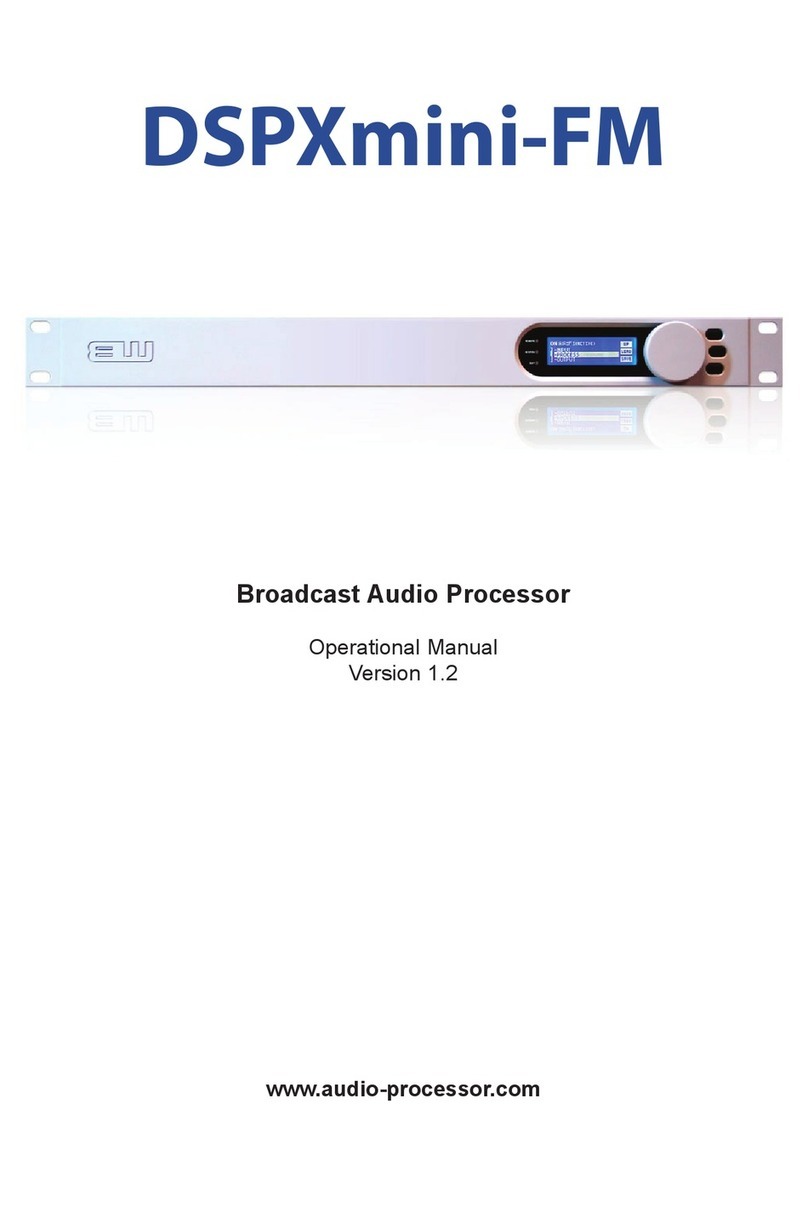
BW Broadcast
BW Broadcast DSPXmini-FM Operational manual
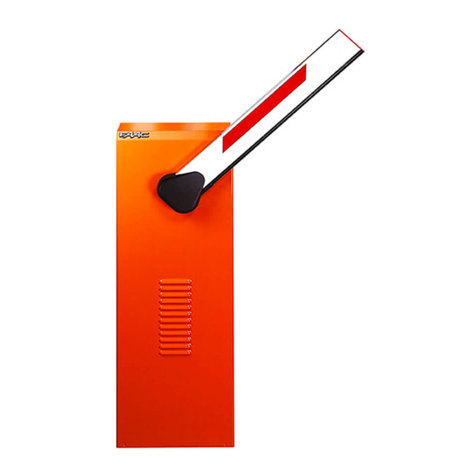
FAAC
FAAC 620 SR Series user guide
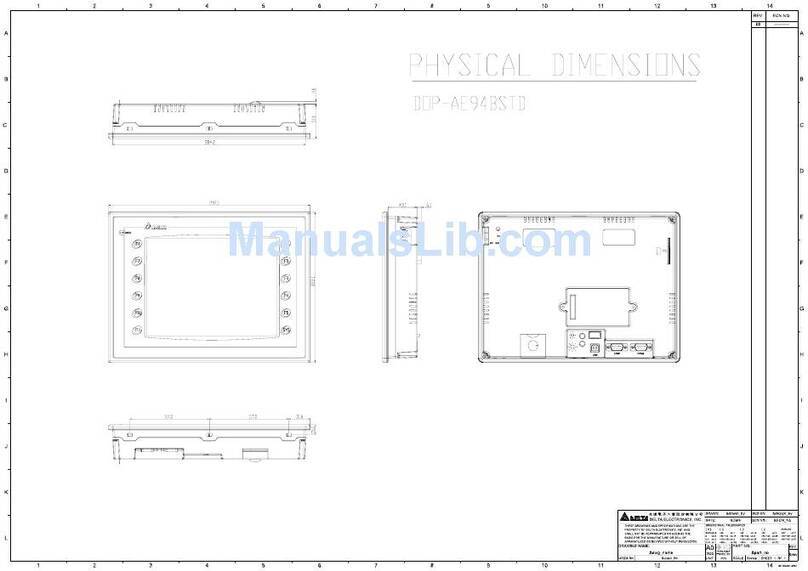
Delta Electronics
Delta Electronics AE94BSTD Specifications
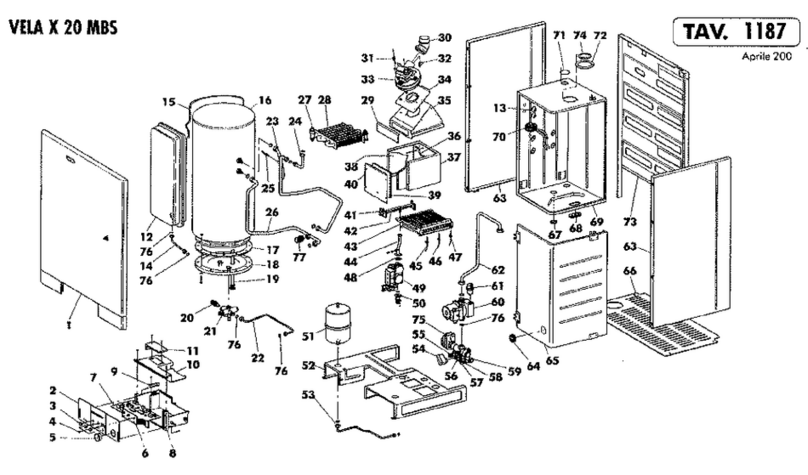
LAMBORGHINI
LAMBORGHINI VELA X 20 MBS - SCHEMA manual
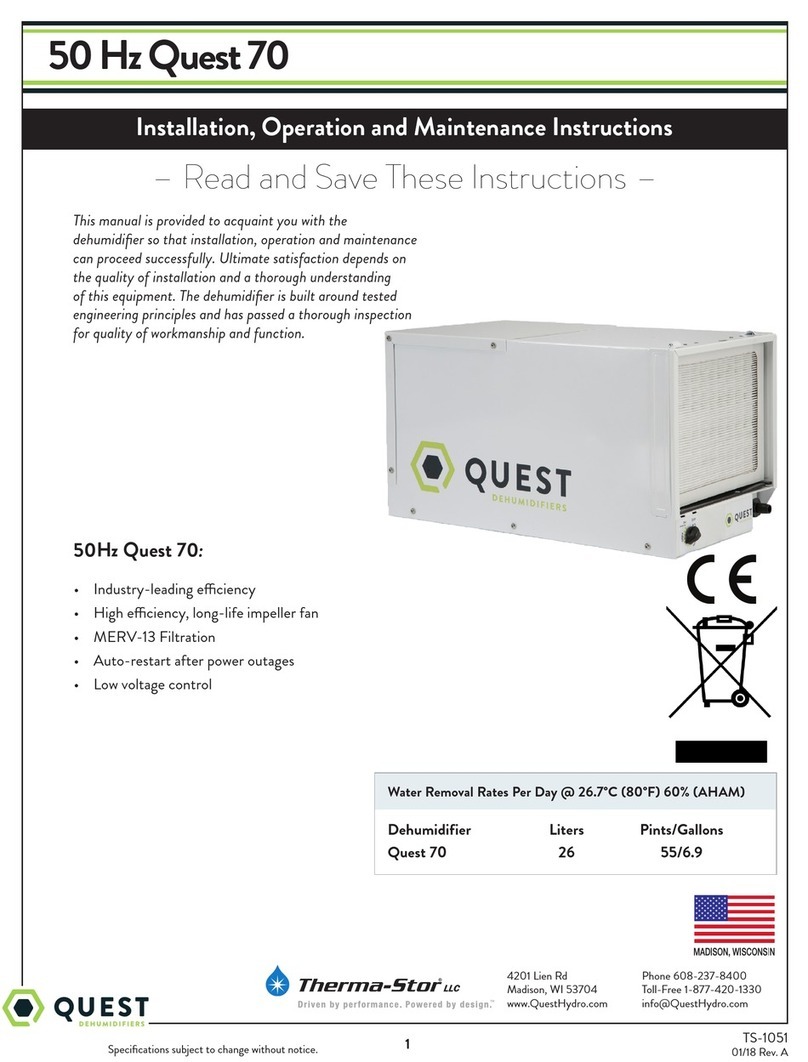
Quest Engineering
Quest Engineering 70 Installation, operation and maintenance instructions

kincrome
kincrome K7745 Operation manual
